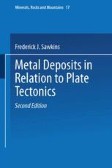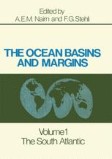Search
Search Results
-
Resource depletion calculated by the ratio of the reserve plus cumulative consumption to the crustal abundance for gold
The magnitude of the world's mineral consumption has increased sharply, and there is no sign that growth is likely to stop in the near future....
-
A new genetic type of gold deposits-meso-epithermal carbonate-type gold deposits as exemplified by the Baguamiao superlarge gold deposit
Gold deposits of the meso-epithermal carbonate type were first proposed based on the study of the Baguamiao gold deposit. This new type of gold...
-
The geology and origin of Carlin-type gold deposits
The static price of gold coupled with increased costs for underground mining in the post-World War II era in the United States led companies such as...
-
Hydrocarbons and Gold Mineralization in the Hot-Spring Deposit at Cherry Hill, California
Hydrothermal solutions carrying gold and organic matter formed the veinlets which comprise the Cherry Hill hot-spring deposit. Solid bitumen and/or...
-
Geophysical exploration for gold
The world-wide interest in gold that has characterized mineral exploration in the 1980s has had a profound effect on the focus and style of...
-
Economics of gold deposits
The primary role of gold mining in the economy is wealth creation. Wealth is generated by finding, delineating, and develo** economic gold deposits...
-
Geochemical exploration for gold in temperate, arid, semi-arid, and rain-forest terrains
In this chapter we examine how geochemical techniques can be utilized in the exploration for different types of gold mineralization, the specific...
-
Fossil and Active Geothermal Systems — Epithermal Base and Precious Metal Mineralisation (Including Kuroko-Type Deposits)
In regions of high heat flow, thermal convection dominates the behaviour of groundwaters or sea water in permeable and/or fractured crust, thus...
-
Metallogeny at Precambrian and Mesozoic continental margins
Modelling of Precambrian continental margin tectonic settings involves plate-tectonic-metallogenic analyses, back-projection of modern lithotectonic...
-
Abstracts of Other Conference Presentations
Many physical (structural and textural) and compositional (chemical and mineralogical) attributes of volcanic rocks are correlated with techtonic...
-
Hydrothermal Alteration
Hydrothermal alteration is a very complex process involving mineralogical, chemical and textural changes, resulting from the interaction of hot...
-
Crustal Hydrothermal Fluids and Mesothermal Mineral Deposits
In this chapter we examine a broad category of hydrothermal mineral deposits whose principal characteristic is their strong structural control, and...
-
Additional Aspects of Arc-Related Metallogeny
In the foregoing chapters, the most important types of deposits found in largely post-Paleozoic, arc-related tectonic settings were examined. These...
-
Gold Deposits—Placers
Placer deposits provided early man with the first samples of gold and thereafter have accounted for a large production of the metal. If we include...
-
Principal Arcs and Their Associated Metal Deposits
Principal arcs are relatively narrow, well defined zones of volcanic and plutonic igneous activity that occur above intermediate to steeply dip**...
-
Uranium exploration techniques
As would be expected from the scope and number of pages assigned to this paper, it is of necessity rather basic in nature. The main purpose is to...
-
Two metallogenic maps for North America
Part of the interior of the North American continent is covered by relatively undisturbed sedimentary rocks not available to the entrance of...
-
Some major concepts of metallogeny
These notes, which summarize part of over ten years of laboratory work, aim to clarify and inter-relate three fundamental concepts of current...
-
The Scotia Arc and Antarctic Margin
The Scotia Arc is the name generally applied to the largely submarine physiographic feature that joins southern South America to the Antarctic...
-
The pre-evaluation of the possible profitability of exploration prospects
The need for exploration and discovery is apparent from the doubling of tonnage mined about each 12 years. The dependency of exploration expenditure...
